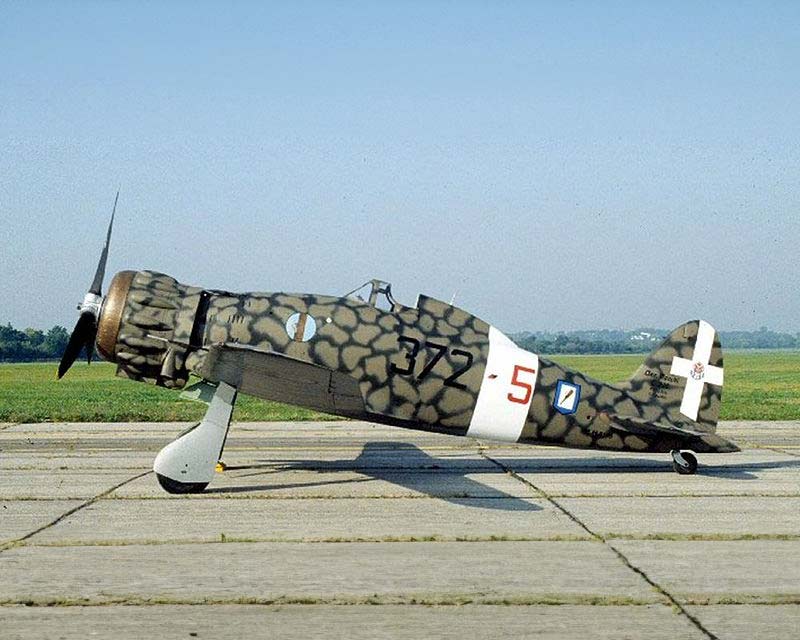The Macchi C.200 Saetta, a WWII Italian fighter, was known for its maneuverability and robust design, serving primarily in the Mediterranean.
This article explores the Macchi C.200 Saetta, an Italian fighter aircraft used during World War II. The development of the C.200 is contextualized within the 1930s’ aviation advancements and Italy’s military needs. Its design features, including technical specifications, strengths, and limitations, are examined. The aircraft’s performance in terms of engine power, speed, altitude, and range is detailed and compared with contemporary fighters. The Saetta’s military use, combat roles, and operational effectiveness in various conflicts are discussed, alongside its distribution to other countries and eventual replacement.
The Macchi C.200 Saetta was a mainstay fighter aircraft of the Italian Regia Aeronautica during World War II. As a single-seat, single-engine monoplane, it represented a significant step in the modernization of Italy’s fighter force.
History of the Development of the Macchi C.200 Saetta:
In the 1930s, as global military tensions escalated, Italy sought to modernize its air force. The Regia Aeronautica required a new generation of faster and more capable fighter aircraft to replace its aging biplanes.
The Macchi C.200 Saetta’s development was initiated by the Macchi Aeronautica company, led by chief designer Mario Castoldi. The C.200 was conceived to meet the Italian Air Ministry’s specifications for a modern fighter capable of high performance and good maneuverability. The prototype first flew on December 24, 1937.
The development of the C.200 was driven by the need for an aircraft that could ensure air superiority. With the rise of air power as a critical factor in military strategy, the C.200 was part of Italy’s effort to keep pace with the advancements in fighter aircraft technology being made by other European powers.
Design of the Macchi C.200 Saetta:
The Macchi C.200 featured a streamlined, all-metal design with a semi-monocoque fuselage and a low-wing configuration. It was 8.25 meters (27 feet 1 inch) long, had a wingspan of 10.58 meters (34 feet 9 inches), and a height of 3.05 meters (10 feet).
The C.200’s design was marked by its enclosed cockpit and retractable undercarriage, which were advanced features at the time. The aircraft was powered by a Fiat A.74 radial engine. One of the notable design aspects was its rounded, almost humpbacked fuselage, which gave the pilot excellent forward visibility but limited rear visibility.
Armament typically consisted of two Breda-SAFAT machine guns mounted on the engine cowling. While this was sufficient in the early stages of WWII, it became less effective as air combat evolved. The Saetta’s maneuverability was a significant advantage, but its speed and climb rate were only average compared to contemporary fighters.

Performance of the Macchi C.200 Saetta:
The C.200’s Fiat A.74 RC38 radial engine, generating around 870 horsepower, provided a maximum speed of approximately 504 kilometers per hour (313 mph), a service ceiling of 9,800 meters (32,150 feet), and a range of 570 kilometers (354 miles).
Compared to contemporaries such as the Supermarine Spitfire and Messerschmitt Bf 109, the C.200 was less powerful and slower. However, its maneuverability and sturdy construction gave it an edge in certain combat situations.
Military Use and Combat of the Macchi C.200 Saetta:
The C.200 saw extensive service in various theaters, including the Mediterranean, North Africa, and the Eastern Front. Its operational roles included air superiority missions, escort duties, and ground attack.
In combat, the C.200 was initially successful, particularly in the Mediterranean and North African theaters, where its robustness and maneuverability were advantageous. However, as the war progressed and Allied aircraft improved, the C.200’s limitations in speed and armament became apparent.
The C.200 was eventually superseded by more advanced Italian aircraft like the Macchi C.202 Folgore. Post-WWII, the C.200 was phased out of active service.
The Macchi C.200 Saetta was an important step in the evolution of Italian fighter aircraft during WWII. While it was overshadowed by more advanced Allied and Axis fighters, its contributions in the early years of the war were notable. The C.200’s design and operational history reflect the challenges and rapid pace of development in military aviation during the conflict.
Back to the Warbirds section.